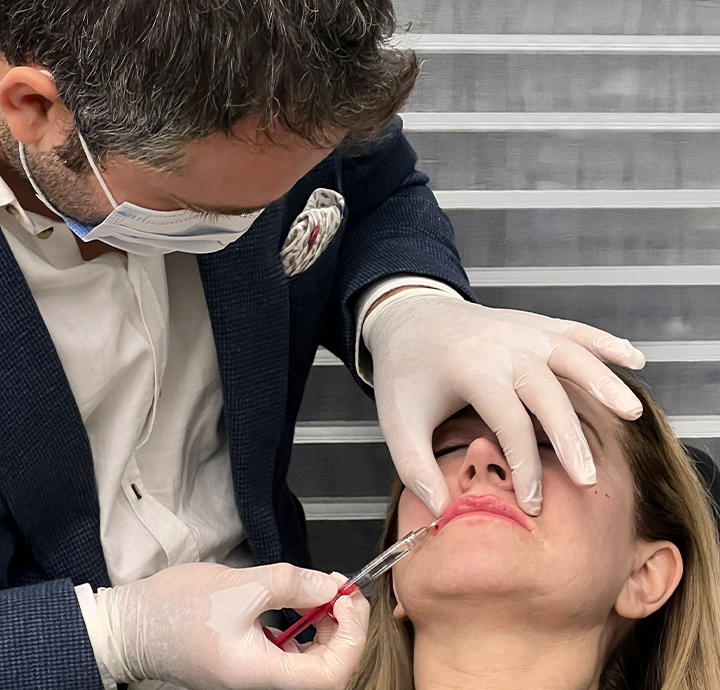The filling procedure is used to obtain sharper and more pronounced lines on the face. Facial fillings can be applied to more than one area according to the needs of the patient.
Some aesthetic problems will inevitably arise in our skin due to genetic factors and aging. Findings such as sunken cheeks and under-eyes, deep facial lines can make you feel old when you look in the mirror. By choosing the facial filler procedure, you will get a voluminous and prominent facial line as before. With filling treatment, patients regain their self-confidence and feel beautiful again.
How Do Facial Fillers Work?
Filling treatment, which is a popular medical aesthetic procedure, is frequently performed with fillers containing hyaluronic acid.
 Filling, also called non-surgical facial aesthetics, is a very sensitive and demanding procedure. A filler specific to the area to be treated should be used. Under-eye light filler is a very thin filler containing pure hyaluronic acid. On the other hand, jawline, chin, and cheek fillings are harder to provide better contours. Lip augmentation is applied with medium-hardness fillers that will make the lip moister. Depending on the characteristics of the area to be treated, the doctor should slowly inject and place the filler to prevent bruising. A light massage can be applied to the area.
Filling, also called non-surgical facial aesthetics, is a very sensitive and demanding procedure. A filler specific to the area to be treated should be used. Under-eye light filler is a very thin filler containing pure hyaluronic acid. On the other hand, jawline, chin, and cheek fillings are harder to provide better contours. Lip augmentation is applied with medium-hardness fillers that will make the lip moister. Depending on the characteristics of the area to be treated, the doctor should slowly inject and place the filler to prevent bruising. A light massage can be applied to the area.
In addition to these, fat cells taken from the belly or thigh areas of the patient can also be applied to the face after a certain procedure. In this method, which is called fat injection to the face, the risk of allergic reactions is minimized as the patient’s own body tissue is used and provides permanence for many years.
In Which Areas Can Facial Fillers be Applied to?
Facial fillers are used mainly on the lips, cheekbones, and around the eyes, as well as in the cheeks, nose area, forehead, temples, and chin areas. Fillers are an extremely effective solution for patients who are afraid of surgery but want to have plastic surgery.
FAQ
The permanence of the facial filler applications varies according to the type of preparations, the application area, and the number and duration of the procedure. While hyaluronic acid fillers stay for 6 months to 1-year, hydroxy apatite fillers last for 2-3 years.
Since the application areas of Botox and face fillers are different, it is not actually right to make a comparison between the two. The logic of "desire to undergo whatever is the most permanent facial application" is not always working. Botox, which contains neurotoxins, relaxes the muscles while filling application adds volume to the skin. Botox removes wrinkles that occur while making gestures and facial expressions; filling treatment corrects the loss of fullness due to aging. If you are wondering whether I need a Botox or filler application, your doctor will tell you the best answer after the examination.
Dermal fillers are only safe when applied professionally. Before the procedure, the patient is examined. It is checked whether the patient reacts to the substances to be used. Criteria for reliability can be listed as follows:
- • Well-trained and experienced doctor,
- • Competent health personnel,
- • Approved injectable filling materials,
- • A sterile clinical setting,
- • A modern medical infrastructure.

